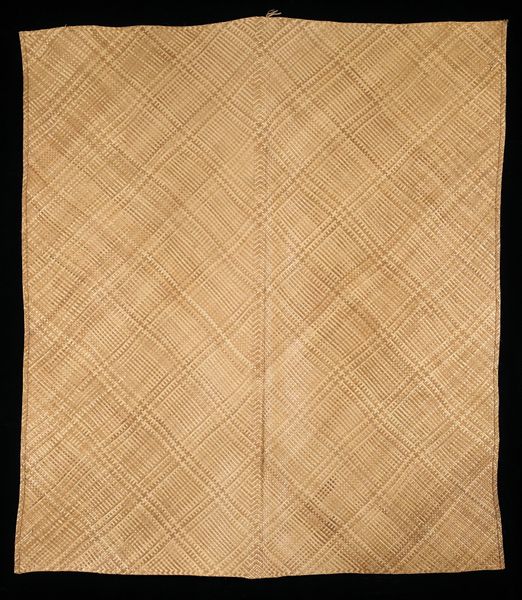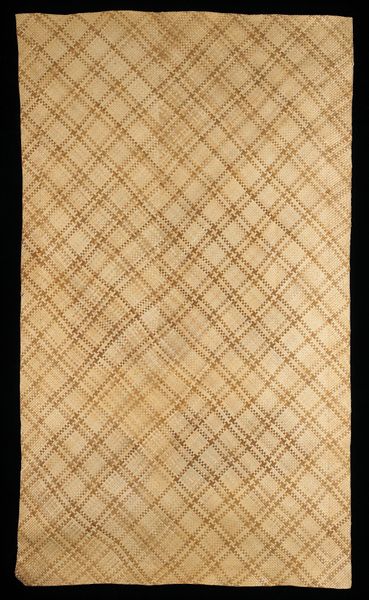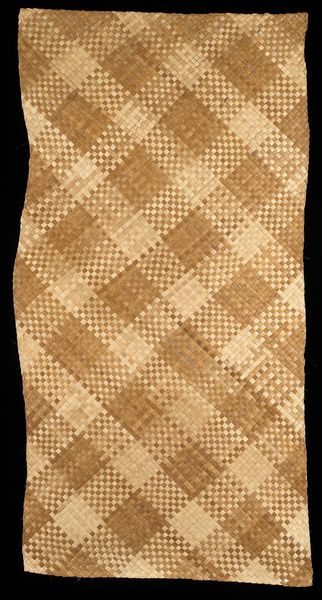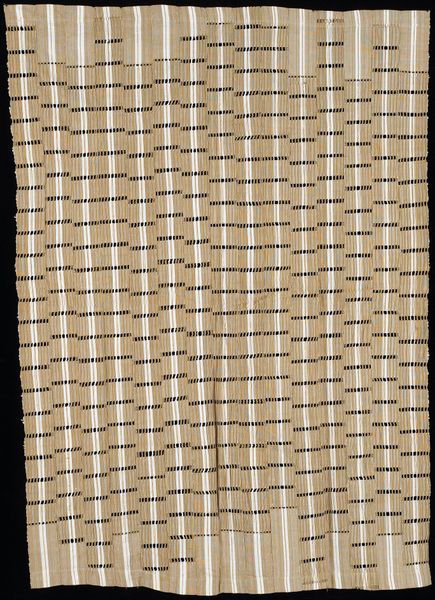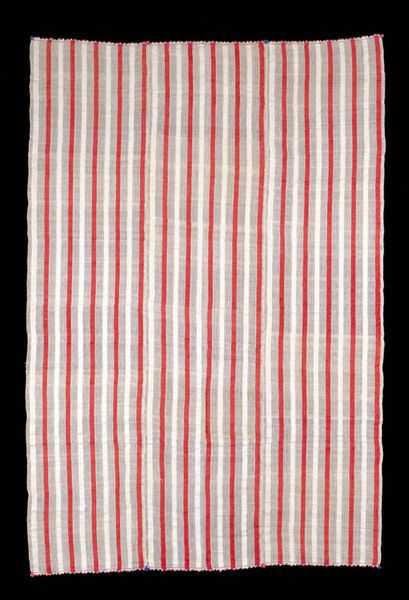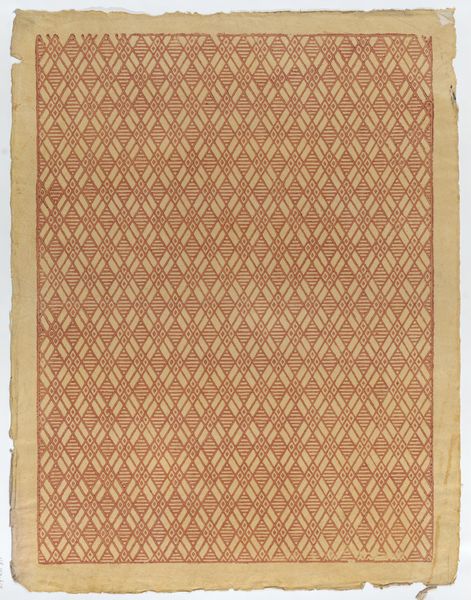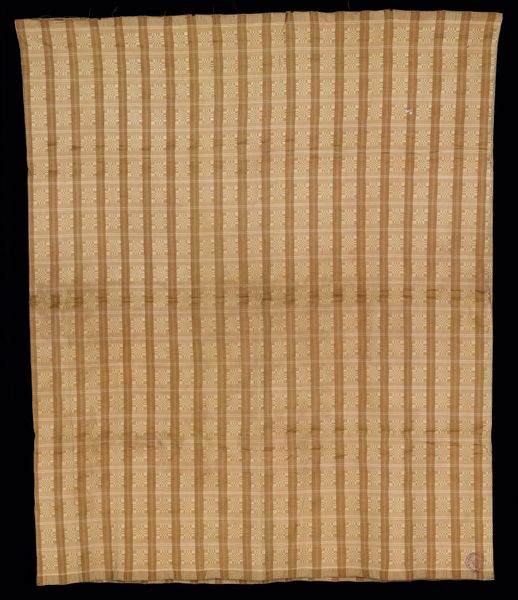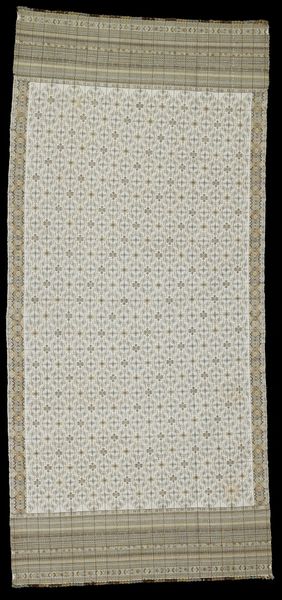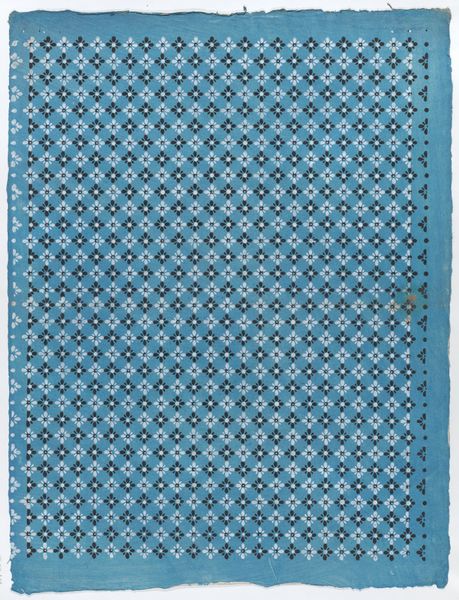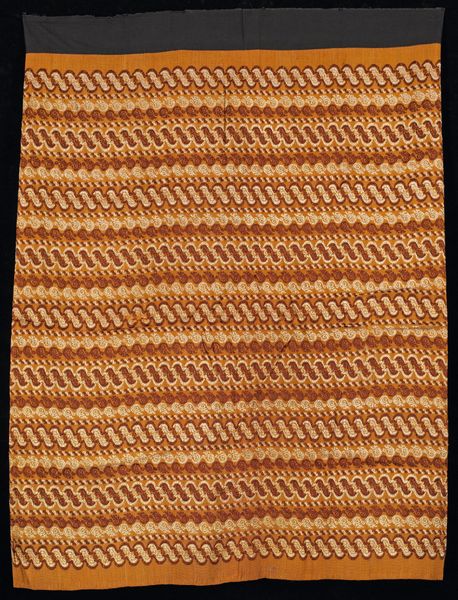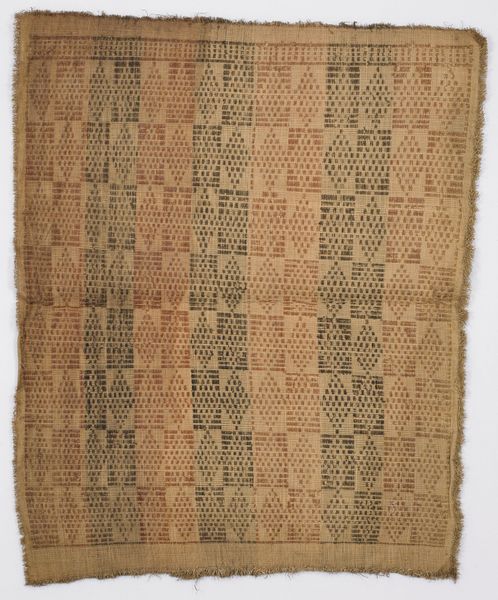
fibre-art, weaving, textile
#
natural stone pattern
#
fibre-art
#
weaving
#
textile
#
geometric pattern
#
repetitive shape and pattern
#
organic pattern
#
geometric
#
repetition of pattern
#
vertical pattern
#
regular pattern
#
pattern repetition
#
imprinted textile
#
layered pattern
Dimensions: 65 1/2 x 31 15/16 in. (166.37 x 81.12 cm)
Copyright: Public Domain
Editor: This is a Ceremonial Mat, made around the 20th century. It's a woven textile and, at first glance, I see a very neat, uniform pattern, almost soothing in its regularity. What do you see in this piece? Curator: I see more than just a pleasing pattern; I see a cultural document. The regularity you observed is deliberate, a testament to the weaver's skill and understanding of tradition. How do you think the repetitive, geometric pattern relates to ritual and power structures within the culture it was created? Editor: That's a good point. The care and precision suggest it was made for a specific, important purpose. Perhaps to denote status or play a role in a rite of passage? Curator: Precisely. We often see textiles used this way—as active agents in constructing and communicating identity. What does it mean when everyday materials are transformed into objects of such careful artistry? And for whom is this artistry performed? Is it an internal display of values for its community, or is there an element of communication directed towards those outside that group? Editor: It's like the mat becomes a language of status and belonging, carefully woven, literally, into the social fabric. Do you think its display challenges the conventional idea of "high art"? Curator: Absolutely. Works like this disrupt the Western art historical canon that often privileges painting and sculpture. Fiber art, particularly when created by women or marginalized communities, has often been relegated to "craft." Understanding this piece means questioning those hierarchies. This piece demands we acknowledge the sophisticated aesthetic and intellectual labor involved. Editor: So by understanding its cultural context, we can challenge these narrow definitions of art. Curator: Exactly. It encourages us to dismantle those art historical hierarchies, to weave together seemingly disparate threads of history, gender, and power. It becomes a powerful reminder that art exists beyond museum walls, actively shaping and reflecting the lives of the communities that create it. Editor: It’s amazing how much this mat can tell us about society and the history of art. I will certainly look at textiles differently from now on.
Comments
No comments
Be the first to comment and join the conversation on the ultimate creative platform.
